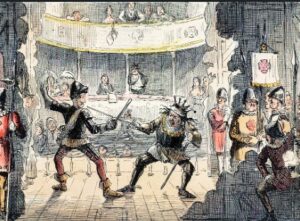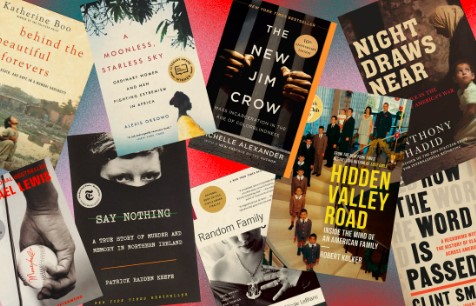Drama novels and scripts transport readers and audiences into captivating worlds of emotion, conflict, and human experience. This comprehensive exploration delves into the multifaceted realm of drama, unraveling the intricacies of its storytelling techniques, themes, and enduring appeal.

The Essence of Drama
At its core, drama is the art of storytelling through conflict, dialogue, and character development. Whether portrayed on the pages of a novel or brought to life on the stage or screen, drama delves into the complexities of human relationships, emotions, and moral dilemmas. It invites audiences to engage with characters facing challenges, making choices, and undergoing transformative journeys.
Crafting Compelling Narratives
Drama novels and scripts employ a variety of techniques to craft compelling narratives that resonate with audiences. From intricate plot structures and richly developed characters to evocative dialogue and vivid imagery, each element contributes to the immersive storytelling experience. The pacing, tone, and thematic depth of dramas vary widely, ranging from intense psychological dramas to sweeping historical epics.
Themes and Motifs
Drama explores a diverse array of themes and motifs that reflect the human condition and universal truths. Love and betrayal, ambition and sacrifice, redemption and forgiveness—these are just a few of the timeless themes that permeate drama novels and scripts. Through these themes, writers delve into the complexities of human nature, morality, and the pursuit of meaning and fulfillment.
Character Development
Central to the success of any drama is the development of compelling and relatable characters. From protagonists grappling with inner conflicts to antagonists driven by ambition or vengeance, well-rounded characters drive the narrative forward and engage the audience on an emotional level. Through their struggles, triumphs, and flaws, characters undergo arcs of growth and transformation that resonate with readers and viewers.
Conflict and Tension
At the heart of drama lies conflict—the driving force that propels the narrative forward and generates tension and suspense. Whether it’s interpersonal conflicts between characters, moral dilemmas, or external obstacles and challenges, conflict serves as the catalyst for dramatic action and character development. The resolution of conflicts often leads to catharsis, offering audiences a sense of closure and resolution.
Dialogue and Monologue
Dialogue and monologue play a crucial role in drama, providing insight into characters’ thoughts, emotions, and motivations. Well-crafted dialogue reveals character dynamics, advances the plot, and conveys subtext and underlying themes. Monologues, in particular, offer characters an opportunity to express their innermost thoughts and feelings, providing moments of introspection and revelation.
Setting and Atmosphere
The setting and atmosphere of a drama novel or script serve as a backdrop that enhances the storytelling experience. Whether it’s the gritty streets of a crime-ridden city, the opulent halls of a royal palace, or the desolate landscapes of a post-apocalyptic world, the setting contributes to the mood, tone, and thematic resonance of the narrative. Through vivid descriptions and sensory details, writers transport audiences into immersive worlds that come alive on the page or stage.
Adaptation to Different Mediums
Drama novels and scripts are adaptable to various mediums, including literature, theater, film, and television. Each medium offers unique opportunities and challenges for storytelling, with adaptations often requiring adjustments to pacing, structure, and visual elements. Whether experienced as a novel, play, or screenplay, drama captivates audiences across different mediums, offering rich and immersive narratives that resonate in diverse ways.
Classic and Contemporary Works
The landscape of drama is vast and diverse, encompassing a rich tapestry of classic and contemporary works that span genres, styles, and cultural backgrounds. From timeless classics like William Shakespeare’s tragedies and Jane Austen’s romantic dramas to modern masterpieces like Arthur Miller’s social dramas and Tennessee Williams’ psychological plays, drama continues to evolve and adapt to changing times.
Diversity and Representation
In recent years, there has been a growing emphasis on diversity and representation in drama, with writers, playwrights, and filmmakers exploring a wider range of perspectives and experiences. From stories that center on marginalized communities to narratives that challenge conventional gender roles and stereotypes, contemporary drama reflects the diverse tapestry of human existence and strives for greater inclusivity and authenticity.
Impact and Influence
Drama has a profound impact on society and culture. Effectively shaping our understanding of the world and sparking conversations about important issues. Through its exploration of complex themes and characters, drama invites audiences to empathize with diverse perspectives, fostering empathy, understanding, and social change. From sparking political debates to inspiring social movements, drama has the power to provoke thought, stir emotions, and ignite change.
Conclusion
Drama novels and scripts are a testament to the enduring power of storytelling to captivate, inspire, and provoke. Through their exploration of human experience, emotion, and conflict, drama invites audiences into immersive worlds of imagination and empathy. Drama continues to evolve and adapt. Whether experienced on the page, stage, or screen. Thus reflecting the ever-changing landscape of society and culture. As we journey through the rich tapestry of drama, we are reminded of the universal truths. Those that connect us all, and the transformative power of storytelling to illuminate the human condition.

